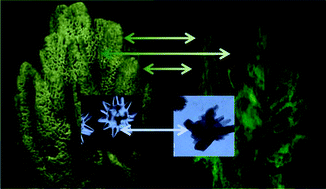Bio-inspired ultrasound assisted construction of synthetic sponges
Abstract
A porous material with a system of cavities can be considered as a sponge. The amazing mechanical, optical, electrical and sorption properties of sponge-like silicon-, carbon- and metal-based materials arose interest in novel synthetic pathways of formation of the sponges which in addition gained value in many energy and climate related issues. Here, we present a prospective bio-inspired approach to fabricate synthetic sponges via intensive ultrasonication. Ultrasound of high intensity triggers formation of cavitation bubbles in liquid in a controlled way. Cavitation happens when a rapid change in pressure occurs. Cavitation in nature occurs in fast streams, produced by some shrimps, and in the xylem of plants. Ultrasonically induced cavitation bubbles can be considered as chemical microreactors providing high temperature and pressure at the microscopic scale and trigger formation of active species (including free radicals) from dissolved molecules. In the context of chemistry, cavitation has the unique potential of locally catalyzing high-temperature (up to 5000 K) and high-pressure (several hundreds of bars) reactions, while the system remains macroscopically near room temperature and ambient pressure. Ultrasound of high intensity has already been applied for the synthesis of structured organic and inorganic materials and composites. In this review we summarize the latest achievements in the application of ultrasonication for the formation of hierarchically ordered 3-D networks (sponges). The prospects of applications of sonochemically formed composites in catalysis, optics, hydrogen storage and corrosion protection are highlighted.

- This article is part of the themed collection: Rising Stars and Young Nanoarchitects in Materials Science

 Please wait while we load your content...
Please wait while we load your content...